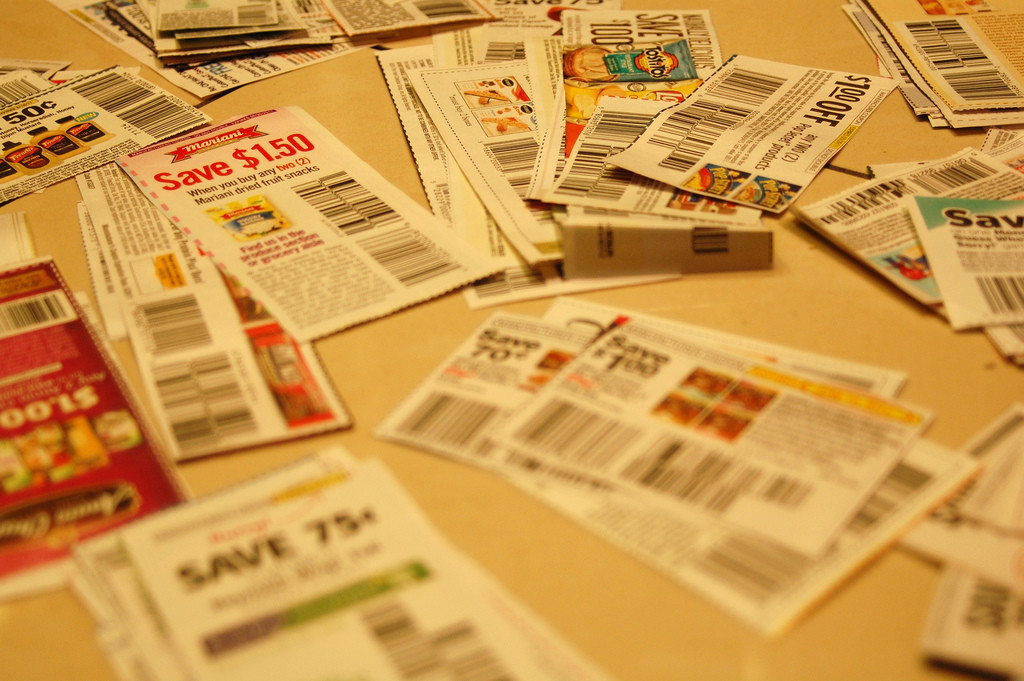
Companies that offer coupons with low face values, make you jump through hoops to get them, and shy away from giving you discounts on food items, might want to listen up – couponers say they want more. More savings, more simplicity and more things they can actually feed their families.
Those insights come via a sneak preview of Inmar’s annual Coupon Trends report, which analyzes coupon distribution and redemption figures from the past year, combined with a bit of shopper feedback from an annual survey.
Overall, the highlight from 2014 is that coupon distribution and redemption were both down slightly – 319 billion coupons were distributed, and 2.84 billion were actually used. Both figures are down about 3% from 2013. It’s another sign that coupon trends are normalizing, after redemption spiked dramatically several years ago. That was during the height of the extreme couponing craze, which coincided with the depths of the recession.
Marketers responded by making their coupons somewhat less attractive, to bring redemption rates down to more manageable levels. That prompted many couponers to complain about low face values, increased purchase requirements and shorter expiration dates.
But things got better last year. While the average face value of available coupons declined slightly in 2013, it spiked nearly 10% in 2014, to an all-time high of $1.71. The average purchase requirement also declined last year, to 1.43 units per coupon. Unfortunately, the average redemption period also declined, to 2 months. But two out of three ain’t bad.
So if companies are giving couponers what they want – higher-value coupons with fewer purchase requirements – what’s behind the dip in coupon redemption? The product mix represented in distributed coupons may have something to do with it. A whopping 62.6% of all coupons offered in 2014 were for nonfood items. But 64.1% of all coupons actually redeemed, were for food items. That means couponers are redeeming food coupons at twice the rate at which they’re being offered, suggesting a much greater demand than supply for deals on edible items. Discounted toiletries and household products are nice, but you can’t exactly serve up shampoo and spray cleaners for dinner.
Ease of use is another factor. While the use of digital coupons is rising, they still represent just 3.5% of all coupons redeemed, and less than half a percent of all coupons distributed. Distribution is still dominated by the Sunday coupon inserts, which represented nearly 90% of all coupons offered last year.
But the redemption rate for insert coupons declined slightly last year, showing that some frustrated would-be coupon users who aren’t into scissors and paper, want an easier way. 37% of the shoppers who participated in Inmar’s shopper behavior survey said they “wish all coupons were digital.” 66% said they “would use coupons more if they were more available online.” Another 66% said they “want coupons loaded to my store loyalty card for products that I normally buy” and about the same number said they “want stores to email me with coupons for products that I normally buy.” As one survey respondent put it, “if I shop a store a lot, I shouldn’t have to work for deals I deserve.”
How’s that for coupon entitlement?
Those who put in the work to clip coupons and save money know that companies are unlikely to benevolently hand out discounts to noncouponers who already buy their products, just because they find couponing too hard. But perhaps those companies will, in the year ahead, listen to their couponing customers and respond to the figures that show coupon users crave higher coupon values, and coupons for food.
No matter the values, or the products on offer, most of us are committed to sticking with couponing. Only 8% of coupon users surveyed said they decreased their level of coupon use last year. 65% said they used about the same as the previous year, and 27% said they were using more.
That’s because 80% agreed that “using coupons makes me feel smarter.” As one survey respondent said, “if I put in the effort, I can get deals on the brands I buy.”
And isn’t that, in the end, what couponing is all about?











Pingback: State of the Coupon - RevTrax Blog